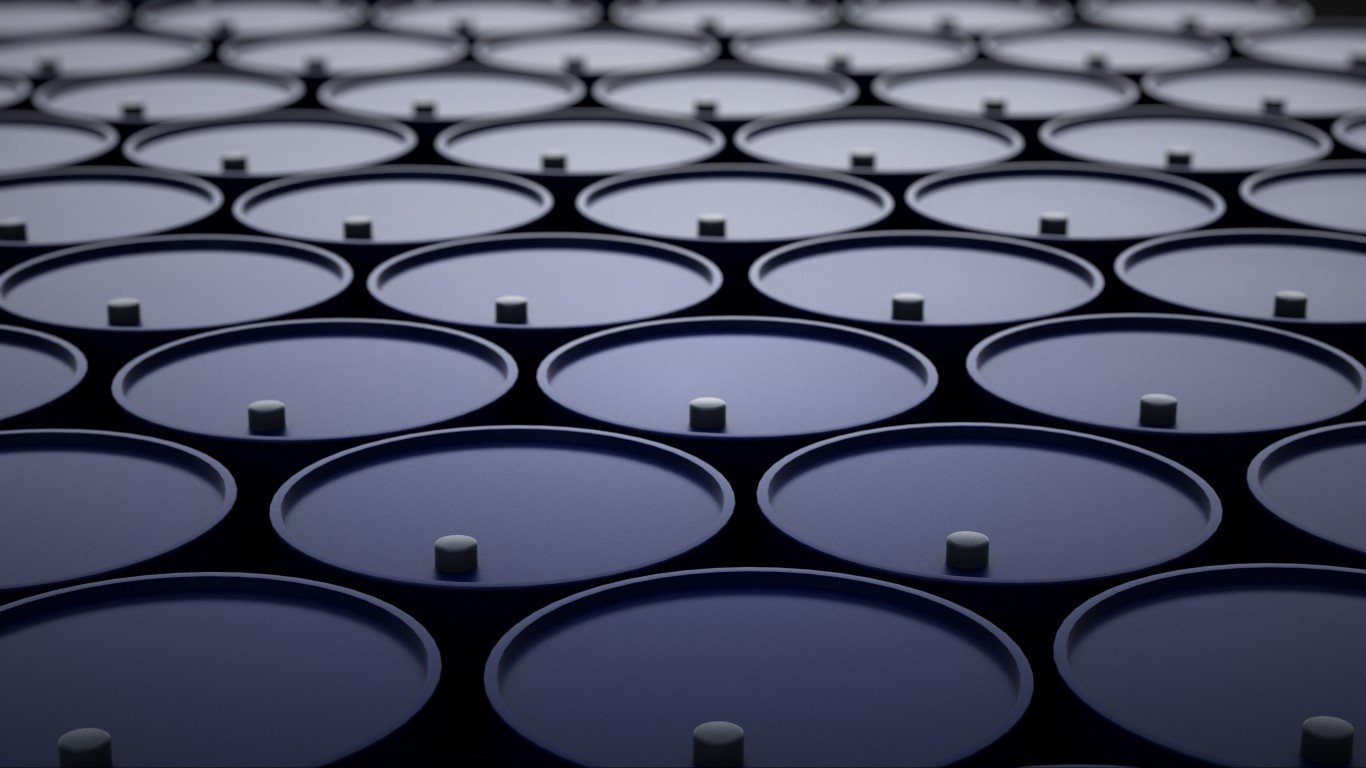

The economic damage caused by the COVID-19 pandemic has wreaked havoc on several industries (air travel, hospitality, retail, to name the most obvious) and taken a heavy toll on another. The oil and gas industry, from exploration and production (E&P) companies to pipelines, refiners and oilfield services providers, also has been hit hard.
The biggest problem the industry faces is a lack of demand. Even a drop of a million barrels or more per day from production cuts among OPEC+ nations has not been enough to push prices outside a narrow range around $40 to $45 a barrel.
According to a new sector report from Moody’s Investors Service, a choppy recovery depends on “gradual improvement in demand as global economic activity picks up, particularly in the key consumption markets of China, southeast Asia, and the US.”
Moody’s vice-president and senior credit officer, Elena Nadtotchi, noted that the pandemic and shutdown of the global economy in the first half of this year “will have a lasting effect on the global oil and gas industry, unsettling long-term energy consumption patterns in the developed markets, while heightening oil and gas price volatility amid a gradual market rebalancing.”
Because Moody’s expects price volatility to remain high, it also expects the cost of capital to remain high, which will lead to a slowdown in capital investment. After all, storing oil and gas in the ground is much cheaper than pumping it out and storing it in tanks or on ships sailing in circles because storage on land is unavailable. The economics of producing oil and gas won’t improve until the speed and trajectory in demand become clear.
The world’s largest oil producers, national oil companies like Saudia Aramco and Equinor, along with the integrated majors like Royal Dutch Shell PLC (NYSE: RDS-A), Chevron Corp. (NYSE: CVX) and BP PLC (NYSE: BP), have begun increasing investment in reducing their carbon footprints and, Moody’s says, most do not plan to reduce those investments this year even while cutting overall capital spending by up to 30%.
The rating agency suggests that while these giants will resume spending on traditional capital projects next year, “they will do so under heavy scrutiny. As risk increases for future oil demand, the allocation of capital for developing new oil projects will face higher hurdles.” In order to maintain their credit quality, publicly traded firms will have to balance new investment with what are currently high dividend payments.
More than half (52%) of Moody’s rated E&P companies currently have a negative outlook that reflects high liquidity and solvency risks. The firm notes that a “severe erosion” in available credit for smaller firms has forced 13 E&P firms to file for bankruptcy so far in 2020.
Refiners face even more trouble because even cheap consumer prices for gasoline and diesel fuel will not lure drivers back behind the wheel during the pandemic. Jet fuel consumption fell by 60% year over year in the second quarter and Moody’s does not expect air travel to recover fully until at least 2023.
The good news is that refiners are used to being whipsawed and as refining margins recover, “refiners will stay focused on free cash flow and maintain tight capital budgets.” But even with this discipline, the refining business is not expected to grow and the refiners will prosper or not based on their margins. Interestingly, two premier U.S. refining companies, Phillips 66 (NYSE: PSX) and Marathon Petroleum Corp. (NYSE: MPC) already have announced refinery shutdowns or revamping to produce renewable diesel fuel.
In July, Moody’s issued its first-ever negative outlook on the entire oil and gas midstream sector. The risk to oil and refined product pipelines is the result of variable throughput volume. Volumes have declined as producers have shut in wells and refiners have cut production of gasoline and jet fuel.
The effect on pipeline companies will be a higher cost of capital to fund growth projects, the life’s blood of a midstream company. Moody’s expects midstream capital spending “to fall sharply in 2020-21, weakening credit metrics and dampening any growth prospects.” Investors are not poised to fare well either: “But post-COVID midstream credit metrics will deteriorate materially without distribution cuts, equity issuance, or significant cuts to growth capital spending.”
The hardest-hit part of the oil and gas sector is, of course, the oilfield services firms. Moody’s believes that the “handful” of investment-grade drillers like Schlumberger Ltd. (NYSE: SLB), Baker Hughes Co. (NYSE: BKR) and Halliburton Co. (NYSE: HAL) “can weather prolonged industry stress” even if credit metrics fall further, speculative-grade companies “face an extreme liquidity crunch.”
Basically what Moody’s is saying is that until demand for oil and gas returns, larger, better capitalized U.S. firms will consolidate their shale assets while the more highly leveraged firms fall by the wayside as banks and investors seek more withhold financial support.
The worst of the COVID-19 effects on the oil and gas industry may be in the rear-view mirror. But having survived in the short term is no promise of survival in the medium or long term. A possible change in political power in Washington is likely to spur more investment and development in clean energy than in more federal support for hydrocarbons. That only deepens the hole the industry has to climb out of.
Take This Retirement Quiz To Get Matched With An Advisor Now (Sponsored)
Are you ready for retirement? Planning for retirement can be overwhelming, that’s why it could be a good idea to speak to a fiduciary financial advisor about your goals today.
Start by taking this retirement quiz right here from SmartAsset that will match you with up to 3 financial advisors that serve your area and beyond in 5 minutes. Smart Asset is now matching over 50,000 people a month.
Click here now to get started.
Thank you for reading! Have some feedback for us?
Contact the 24/7 Wall St. editorial team.


